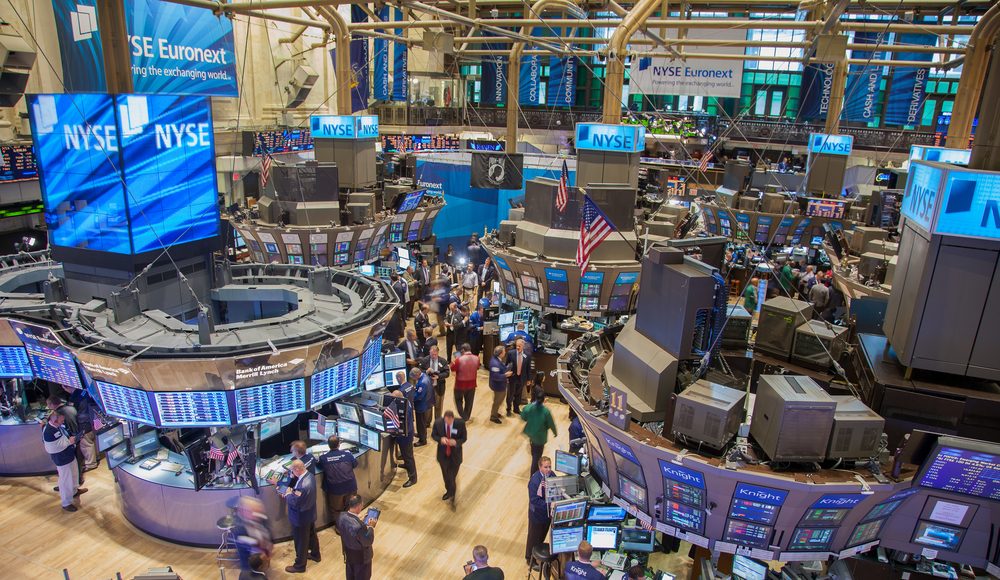August 9, 2025
Every successful investor knows a painful truth: knowing when to sell is often more critical than knowing what to buy.
While financial media overwhelmingly focuses on buying opportunities, our research consistently identifies companies facing significant headwinds that merit serious consideration for selling. These aren’t just stocks underperforming the market; they’re businesses confronting structural challenges, deteriorating fundamentals, or carrying valuations disconnected from financial reality.
What you won’t find here: reactionary calls based on short-term price movements or headline volatility. Each company on this list has been thoroughly analyzed across multiple metrics that historically precede substantial declines.
Smart investors understand that portfolio management requires both addition and subtraction. Sometimes the best investment decision is to redeploy capital away from troubling positions before problems fully materialize in the share price.
This week’s watchlist highlights stocks showing critical weaknesses that demand immediate attention:
Hims & Hers Health (HIMS)
Hims & Hers Health faces an existential legal threat that could destroy the core growth engine driving its impressive 73% revenue increase to $500 million in Q2 2025. The telehealth platform’s 17% weekly decline reflects growing investor recognition that the company is “blatantly selling patented weight loss drugs” in direct violation of intellectual property laws, creating potential liability that could dwarf its $12 billion market capitalization. While the FDA shortage loophole previously allowed sales of compounded weight loss medications, continuing these sales after the shortage ended places the company in direct legal jeopardy with pharmaceutical giant Novo Nordisk.
The fundamental issue isn’t just the current lawsuit but the reckless disregard for intellectual property law that management has demonstrated in pursuit of growth. Weight loss medications have become a significant revenue driver contributing to the 30% growth in subscribers and 30% increase in spend per active subscriber, making this legal battle potentially catastrophic for future financial performance. The company’s formerly favorable partnership with Novo Nordisk deteriorated specifically because of “disagreements over Hims & Hers selling knockoffs of its weight loss drug formula,” suggesting management knowingly chose short-term profits over long-term legal compliance.
At $51.81 with a 67.11% gross margin that appears strong on the surface, Hims & Hers trades on the assumption that its rapid growth trajectory can continue indefinitely. However, the legal ramifications of selling patented drugs without authorization could result in massive damages, injunctive relief forcing business model changes, and potential criminal liability for willful patent infringement. While the stock has generated exceptional returns with 400% gains over five years, the current legal exposure represents an unquantifiable risk that prudent investors cannot reasonably assess. For shareholders, the combination of management’s apparent disregard for intellectual property law and the potential for business-ending damages creates a compelling case for exit until the dispute is resolved and new compliance frameworks are established.
Camtek (CAMT)
Camtek demonstrates how even strong fundamental performance can trigger significant selling when growth trajectories fail to meet elevated investor expectations in hot sectors like AI-adjacent semiconductors. The inspection equipment manufacturer’s nearly 15% weekly decline despite achieving record revenue of $123 million (20% year-over-year growth) and 19% profit growth to $39 million reveals how AI-related stocks face heightened scrutiny when results merely meet rather than exceed expectations. The company’s positioning in advanced packaging for AI components should theoretically benefit from increased computing power requirements, yet investors appear concerned about the sustainability of current growth rates.
The technical warning signals are particularly concerning given Camtek’s exposure to semiconductor industry cyclicality. Third-quarter guidance of $125 million represents 11% year-over-year growth, a notable deceleration from Q2’s 20% pace that suggests demand patterns may be normalizing after the AI-driven surge. This guidance disappointment is especially problematic for a stock trading at premium valuations within the semiconductor equipment space, where investors have been willing to pay elevated multiples based on assumptions of sustained AI-driven demand acceleration.
At $83.02 with a market capitalization of $4 billion and a 50.29% gross margin, Camtek appears technically sound but potentially overvalued relative to its cyclical industry positioning. The trading volume patterns and technical breakdown from recent highs near $110 suggest institutional investors are taking profits after the stock’s substantial run-up. For investors seeking semiconductor exposure, Camtek’s combination of growth deceleration, premium valuation, and cyclical industry dynamics creates risk that the current correction may have further to run before finding sustainable support levels.
Snap (SNAP)
Snap exemplifies the persistent challenges facing social media companies attempting to achieve sustainable profitability despite user growth and revenue expansion. The platform’s 17% weekly decline following second-quarter results highlights how investors have lost patience with companies that continue burning cash despite years of scale building. While revenue grew 9% year-over-year to $1.35 billion and daily active users increased by the same percentage to 469 million, the company’s net loss actually deepened to $263 million from $249 million the previous year, demonstrating inability to convert growth into profitability.
Most concerning is the stagnation in average revenue per user (ARPU), which increased by just $0.01 to $2.87, suggesting Snap is struggling to monetize its user base effectively despite platform improvements and advertising tool enhancements. This ARPU weakness indicates fundamental challenges in competing for advertising dollars against platforms like TikTok, Instagram, and YouTube that offer superior targeting capabilities and audience engagement metrics. The decision to raise $550 million through senior notes at nearly 6.88% interest (upsized from $500 million) signals management’s recognition that the path to profitability remains unclear and expensive.
At $7.42 with a market capitalization of $12 billion, Snap trades at substantial multiples to revenue despite persistent losses and increasingly expensive capital requirements. The company’s 51.14% gross margin provides some operational leverage potential, but consistent inability to control overall expenses suggests systemic rather than temporary profitability challenges. With extraordinary trading volume of 49.9 million shares versus the 38.4 million average, institutional selling appears to be accelerating as investors lose confidence in the company’s ability to achieve sustainable profits. For investors seeking social media exposure, Snap’s combination of deepening losses, stagnant monetization, and expensive debt financing suggests considering alternatives with clearer paths to profitability or more defensive market positions in the evolving social media landscape.
Bottom Line
This week’s featured companies illustrate how different types of business risks can overwhelm otherwise positive operational metrics and trigger significant selling pressure. Hims & Hers faces potentially catastrophic legal liability from patent infringement, Camtek confronts growth deceleration expectations in a cyclical industry, and Snap struggles with persistent profitability challenges despite user growth. In each case, fundamental concerns about business sustainability, legal compliance, or competitive positioning have created situations where strong revenue growth or market position advantages cannot offset underlying vulnerabilities. For prudent investors, these examples highlight the importance of recognizing when external risks, execution challenges, or industry dynamics create asymmetric downside potential that outweighs apparent operational strengths.
Disclaimer: This analysis represents the opinions of the author and should not be considered investment advice. Always conduct your own research before making investment decisions.








